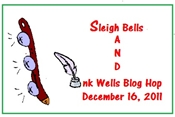On Designing a Building— Or Writing a Novel
In this season of the dark when we await the return of the light, I offer this story of relationship to mystery.
A building or town will only be alive to the extent that it is governed by the timeless way. It is a process which brings order out of nothing but ourselves; it cannot be attained, but it will happen on its own accord, if we will only let it happen. —Christopher Alexander, The Timeless Way of Building, ix.
The way I learned to write a novel was through reading architect Christopher Alexander’s The Timeless Way of Building. “To seek the timeless way we must first know the quality without a name,” he says. The quality is “objective and precise” and “the central search of any person… the crux of any individual person’s story.”
It was this philosophy that motivated me to listen for that quality in my own writing. In early years I was compelled to write snakes stories that I had heard over and over as a child. The stories were entertaining and often funny, but as I listened for “this quality that could not be named”, I began to question what the stories were really about.
Being a Jungian analyst, I am trained in listening to the undercurrents of dreams, and these snake stories were like collective dreams. I noticed how people told me their own snake stories when they heard mine, many of their stories similar. What was the collective dream, the unnamed quality in the stories? The serpent is an archetypal image, one that has counterparts in all cultures. It is often associated with earth energies, as in the serpent lines of England, or dragon energies of the East. As I contemplated this, a character Angela arrived, and a story unfolded. To the extent that I could stay open to the mysterious quality imbued with liveliness, the action proceeded. When I worried about where it was going, the action stopped. It was an exercise in letting go but staying present to record what turned up.
Alexander offered help here, too; I read his work like sacred scripture. “But though this method is precise,” he instructed, “ it cannot be used mechanically. … it turns out that this knowledge only brings us back to that part of ourselves which is forgotten. …what it does is not so much to teach us processes we did not know before, but rather opens up a process in us, which was part of us already.”
Like the personal psychological analysis I was undergoing at the time, writing Snakes (2011) required I trust my psyche for the images and the stories coming to me. “…we learn …that this capacity in us is not accessible, until we first go through the discipline which teaches us to let go of our fears.” Fear, as any of us who write know, is a major component of writer’s block. So I wrote, reassured that something could come of this process of shooting the rapids of my psyche. After Snakes came Farming Soul: A Tale of Initiation (2010), and then forthcoming novel Goatsong (2012).
I look for this quality in other writers’ works. I cannot continue reading if it is not there. Mystery is compelling. There is a huge difference when an author has opened to the mystery of his or her psyche, or when he or she has only fabricated a plot. These fiction authors open to mystery: Barbara Kingsolver, Regina McBride, but also those less known, but equally gifted who are also participating in this : Smoky Zeidel, Malcolm Campbell, Elizabeth Clark-Stern, Sharon Heath. But so does the nonfiction of C.G. Jung in The Red Book, and Naomi Lowinsky’s Sister from Below, and Leah Shelleda’s poetry. The varied writings of Stephen Harrold Buhner, offer roads into mystery nonfiction.
To continue on on this blog hop, please visit author Debra Brenegan at
https://debrabrenegan.blogspot.com/
And please consider supporting these small press authors by purchasing their books for your gift list!
Participating Authors: Sleigh Bells and Ink Wells
Smoky Zeidel https://SmokyZeidel.wordpress.com
Malcolm R. Campbell https://KnightOfSwords.wordpress.com
T.K. Thorne https://tkthorne.wordpress.com/
Collin Kelley https://collinkelley.blogspot.com/
Ramey Channell https://SweetMusicOnMoonlightRidge.blogspot.com/
Leah Shelleda https://www.leahshelleda.com/
Christopher Alexander, The Timeless Way of Building. New York: Oxford University Press, 1979.

